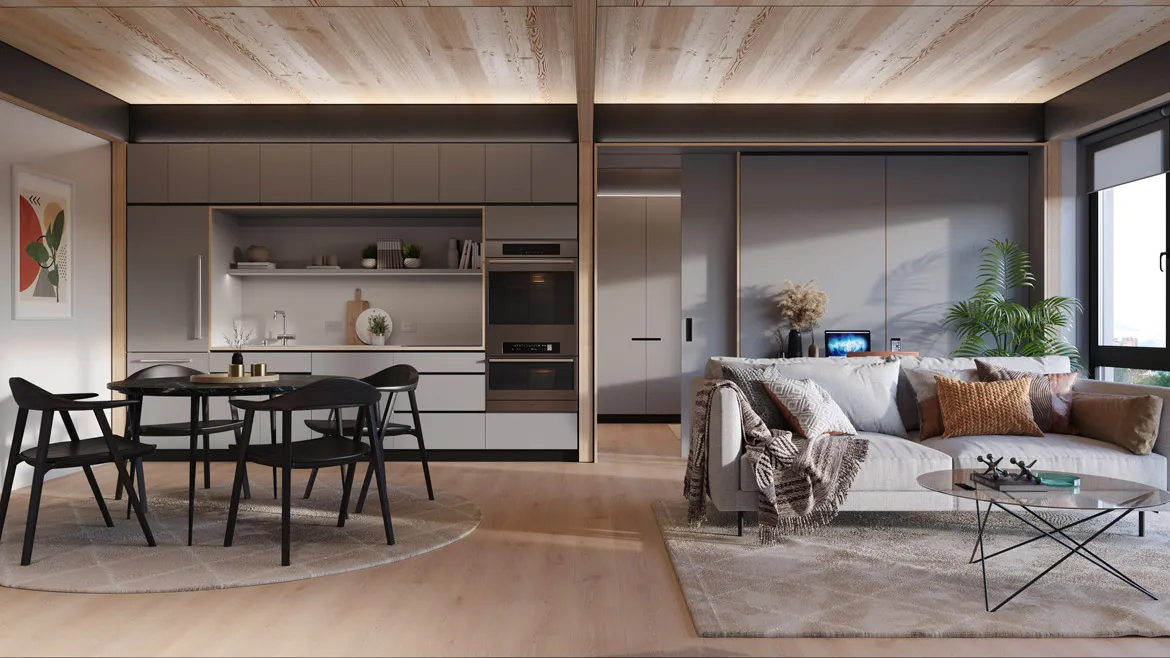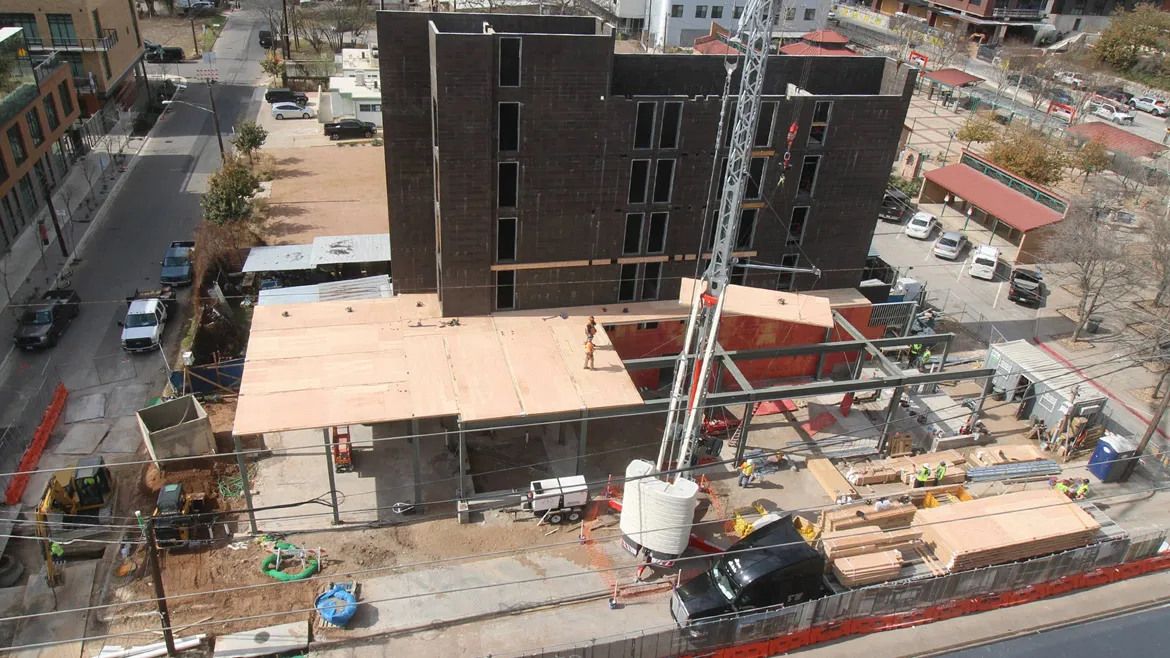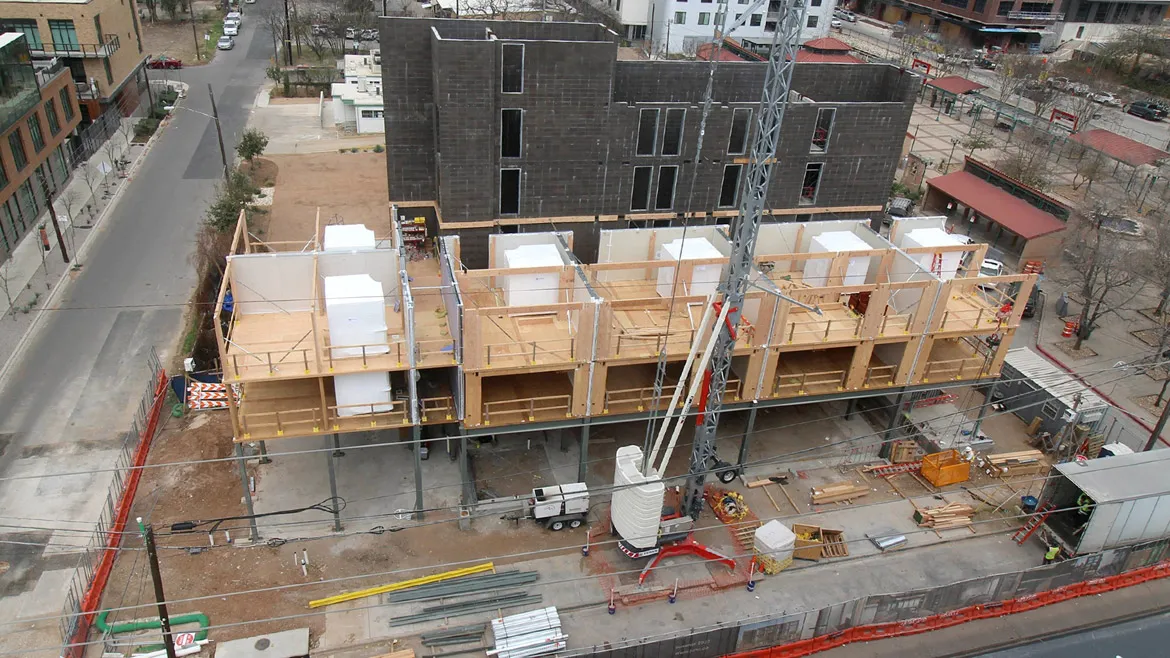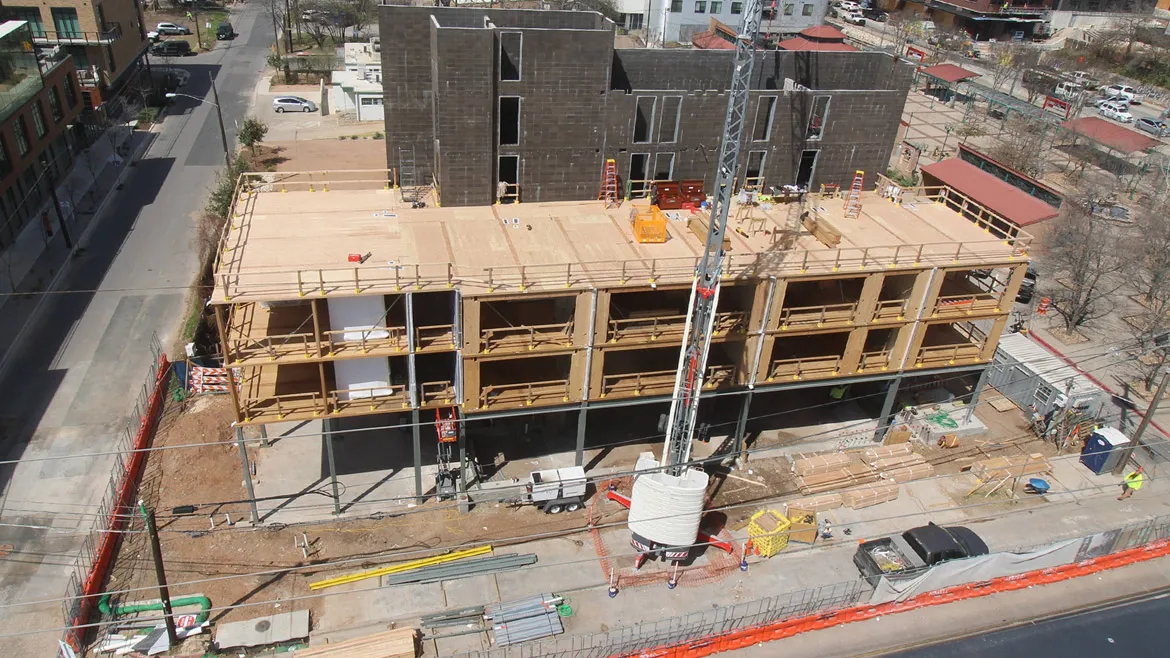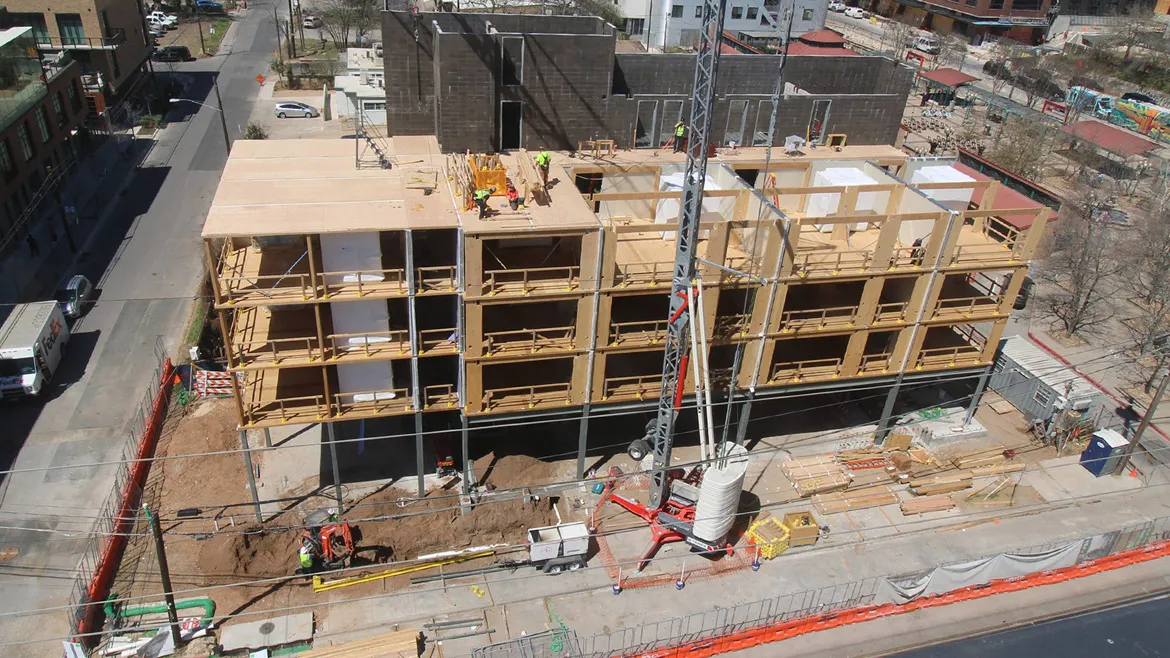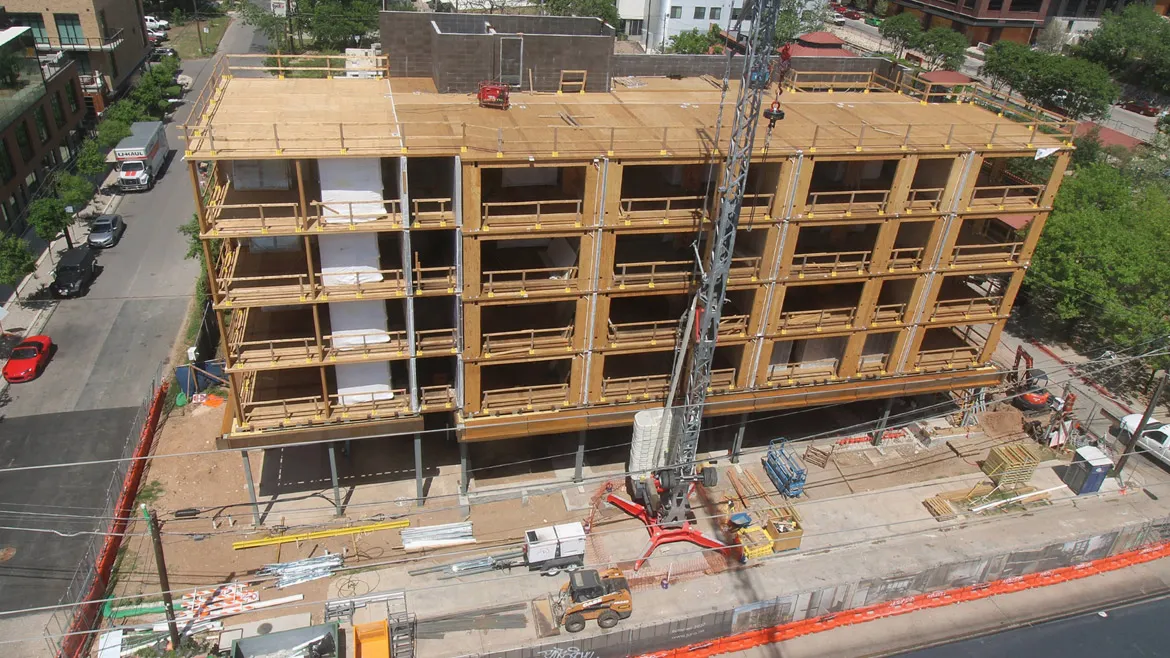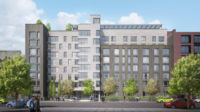Juno, a San Francisco-based property development startup, with New York-based Ennead Architects as a design partner, has set its sights on transforming the way multifamily housing is built in the United States. Relying heavily on digital tools for design and fabrication, the collaborators have developed a modular, componentized system, largely of mass timber, that they say results in better quality, shortened construction schedules, and lower costs compared with more traditional methods. Juno’s first project—a five-story apartment building in Austin, Texas, containing 24 market-rate units—is headed for completion later this year.
By “productizing” housing, Juno, established in 2019, is making construction more like the manufacturing process for consumer electronics, according to BJ Siegel, the company’s co-founder and head of design. In his previous role as an executive at Apple, Siegel worked with Ennead on Apple stores in Scottsdale, Arizona, and elsewhere. Ennead has a small equity stake in Juno.
The approach resembles that of the technology-driven construction company Katerra, which filed for bankruptcy last year. Siegel, however, points out that Katerra was asset-heavy: it had acquired the design firms Michael Green Architecture and Lord Aeck Sargent and had its own factories supplying wall systems, trusses, cabinetry, and cross-laminated timber. In contrast, Siegel says, Juno is nimble, with a decentralized and flexible supply chain, drawing on a network of vendors, fabricators, and installers for the roughly 30 components that comprise its buildings. Juno raised $20 million in Series A funding last year on top of $11 million raised in 2020. Apartment buildings planned for Denver and Seattle are currently in the design and permitting phases.
In Austin, the Juno project’s four levels of mass timber over a structural steel podium are now in place, with components such as mass-plywood floor slabs and columns and laminated-veneer-lumber beams erected, as well as integrated bathrooms pods, demising walls, and glazing installed. Completion of this superstructure required 28 days for the timber levels, or about seven days per story. Juno calculates that the pace is 60 percent faster than that of a typical stick-built building of similar size, shaving a total of about 20 weeks from the construction schedule. Renderings show facades of weathering steel and corrugated metal, and interiors with blond wood floors and ceilings, sleek kitchens, and full-height windows. Siegel says the intent is to make entering each unit “feel like walking into a big piece of furniture.”
Ennead partner Tomas Rossant explains that only the podium required conventional construction documents. The floors above exploited the capabilities of building information modeling (BIM) in order to develop the kit of parts, identify and quantify components, and work with partners on sourcing, cost estimating, and construction scheduling. “We are driving BIM to the speed limit,” he says.
The Austin project is designed to perform 20 percent better than required by code. The all-electric building has highly efficient lighting, heating, and cooling, and a well-insulated envelope. Further improvements are planned for the projects in Denver and Seattle, including an energy-recovery system and heat-pump water heaters. The componentized methodology is also a primary sustainable feature, with the timber sourced from certified forests in the Pacific Northwest and the off-site fabrication process producing minimal construction waste. But Juno’s aspirations go beyond creating responsible, resource-conserving buildings. Siegel hopes that the strategy will provide a remedy for the construction industry’s notorious inefficiencies while creating highly desirable, modern, and daylight-filled urban housing. He predicts Juno will be “a product that people will connect with."

The Juno system consists of about 30 pre-fabricated elements. Image courtesy Juno/Ennead

